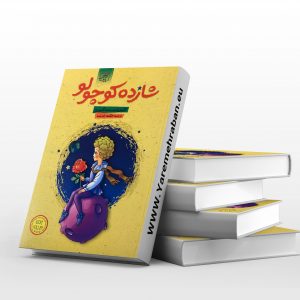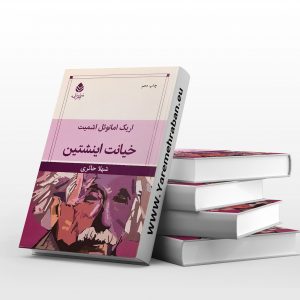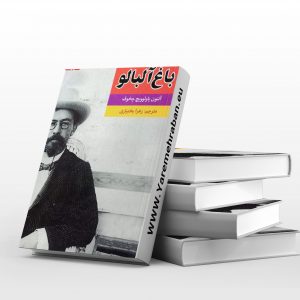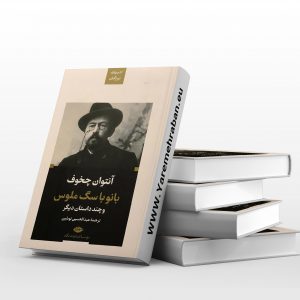Description
The book of A Social History of sexual Relations in Iran (the word sex has been deliberately replaced so as not to involve filtering problems) written by Willem Floor is one of the most important historical and scientific researches on sexual and marital relations as well as various sexual deviations and the like. These topics are very useful.
On the cover of the book
Dutch sociologist and researcher Willem Floor is fluent in Persian and Arabic and has written numerous books on Iranian history and culture. He considers the publication of the Persian translation of the book “Social History of Sexual Relations in Iran” as an opportunity to acquaint the reader with the “2500-year history of norms, attitudes and temporary marriage, prostitution, homosexuality and the prevalence of sexually transmitted diseases in Iranian society.” In this “historical journey” he shows how the norms and practices in the mentioned fields have changed or remained stable over the centuries.

In her book, Flora has used various sources, from ancient Iranian literature, from Massoud Saad Salman, Suzani Samarkandi, Hafez and Saadi, Rumi and Attar to notes, memoirs and observations of foreigners who have traveled to Iran throughout history and reports about They have written their observations.
Listen: Interview with Willem Fleur, author of “Social History of Sexual Relations in Iran”
Listen: Conversation with Mohsen Minokhord, translator of the work
More than 90 pages of the 435-page book “Social History of Sexual Relations in Iran” are devoted to notes and references that the author has cited for his research. The translator of this book, Mohsen Minokhrd, has tried very hard to reflect the quotations of the book, except for a few examples of poems that he did not have access to, by referring to the original texts in his translation.
Flora does not consider the purpose of her work to be a comparative study. He wants “the reader to achieve a balanced view of sexual relations in Iran, as stated in the sources.” According to the author of this book, although the mentioned sources are “elitist, patriarchal and from the point of view of foreign observers”, but he has tried to use all of them to present “a picture as close as possible to reality”.
The book “A Social History of sexual relations in Iran” entitled “A Social History of sexual relations in Iran” was written in English and published in the United States in 2008. The translation of this book has been published by Ferdowsi Publications in Sweden.
History of “sexy” or “sexual” relationships
Mohsen Minokhard, the translator of the book, explains why he chose the name “Social History of Sexual Relations in Iran” instead of “Sexual Relations” as the translation of the headline: “The word ‘sex’ has Latin roots and means gender. Thus, sexuality finds semantic ambiguity in more precise texts, that is, scientific texts. Because sexual intercourse involves a relationship between the two sexes, including an economic relationship, a legal relationship, and many relationships.
Therefore, sexual intercourse does not necessarily mean intercourse. For this reason, I thought it best to use the phrase “sexual intercourse” for a book that deals with the sexuality of both sexes, male and female, or bisexual, male and female, or female and female …. In addition, the word sex can be combined “Co-creation like ‘Sexism’ or ‘Sexual Women’ I have used in this book, but these compounds cannot be made by co-sleeping or having sex.”
The book “Social History of Sexual Relations in Iran” has researched the history of sexual relations in Iran in five sections. In the first part, marriage in Iran is examined as a family matter. Flora’s view of marriage in Iran is a historical one. Relying on the surviving works and evidence, he begins with marriage in the Achaemenid period and then, with a brief look at the pre-Islamic periods, reaches the rules of Islam and marriage to Iran today. Social and economic criteria in marriage, polygamy and the role of virginity, divorce and “do’s and don’ts in bed” are some of the topics that the author discusses in this chapter of the book.
Flora has a special section on the subject of temporary marriage. This issue is still the subject of heated debates in the society and among the members of parliament. Mohsen Minokhrd considers the publication of the translation of the book as an accident at this time and says: “Maybe this book should have been written ten or twenty years ago.
Unfortunately, many of us Iranians are not even aware of marriage, concubinage, mut’ah, and the like from the Islamic and Shiite point of view. Because we have never had a historical view of this issue. And in many cases we have dealt with this issue from a purely political point of view. “But Willem Floor has impartially examined both Islamic and pre-Islamic Iranian sources, as well as contemporary ones.”
The interesting point in this part of the book, in addition to examining the issue of temporary marriage in the Safavid to Qajar period, is the treatment of religious minorities such as Christians and Jews in Iran with this issue. In the third part of the book, the subject of prostitution throughout the history of Iran from the caliphs to the Mongol era, the wages of prostitutes and society’s view of them throughout history is discussed. Showing the patriarchal view in Iranian society on this issue is of interest to Flora. Prostitution in Iran during the Islamic Republic has a special place.
The subject of homosexual relations in this book is discussed in a separate section with reference to poems by great Iranian writers. In addition to the love of immature boys, which has been widely reflected in our literature, the book also addresses lesbianism and relationships between men. The final section of the book discusses sexually transmitted diseases in Iran and its spread in contemporary Iran, including AIDS.
Patriarchal culture is a barrier to scientific research
It is very difficult to address the issue of sex in Iranian society. Sex is considered taboo and taboo. According to Mohsen Minokhord, the translator of the book: “In Iran, we only mention sex in our insults or jokes, and we have never had a scientific or historical view on this issue. Sex is an important part of human existence. After eating and drinking, sex is the most important need of the human body. “But patriarchy has not allowed our culture to be dealt with scientifically, that is, as it has been dealt with in the West and studied history from the distant past of our pre-human ancestors.”
From the author’s point of view, in Iran, as elsewhere, all kinds of sexual relations between man and woman, man and man, woman and woman, man and animal have been involved. “Apart from the different religious and cultural contexts, what this study shows is that the nature, diversity and problems of sexual relations in Iran over the centuries are not much different from sexual relations, for example in European countries … History of sexual relations,” he said. “It shows that people, no matter how much society and religion try to impose their world norms on them, do not deny their human nature.”
Flora likens the nature of sexual harassment in Iran to that of many industrialized nations: Sex, prostitution, street children, homosexuality, and sexually transmitted diseases. But whether the Iranian government will be able to deal effectively with these problems depends on how it acts and moves forward given its religious dilemmas. “The future will show.”
Interest in Iranian culture
Willem Floor Willem Floor was born in the Netherlands in 1942 and studied sociology and economics at the University of Utrecht from 1963 to 1967. He received his doctorate in the same field from Leiden University in 1971. “It was by reading the history of Beyhaqi that I fell in love with Iranian culture and never gave up,” says Flora. “Since then, 45 years ago, I have continued my research for a society with Iranian culture and history.”
1- Introducing the book A Social History of sexual Relations in Iran on YouTube
2- Introducing the book A Social History of sexual Relations in Iran in Aparat














Reviews
There are no reviews yet.